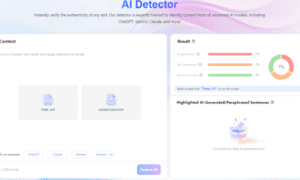Envision a world where seamless communication with locals across the globe is effortlessly achievable, regardless of their language. Imagine engaging in conversations with strangers from foreign countries, exchanging stories and experiences without stumbling through language barriers or resorting to awkward gestures. Thanks to groundbreaking technological advancements, this vision is swiftly becoming reality. Real-time translation apps are reshaping the way we overcome language barriers, dismantling obstacles that have historically impeded connections among diverse cultures. Within this article, we will delve into the captivating realm of these revolutionary apps, exploring their transformative impact on global communication.
Introduction to Real-time Translation Apps
With the surge of globalization, the imperative for effective communication spanning language divides has grown exponentially. While multiple methods of translating text exist, such as online translation tools or hiring professional translators, these routes can be sluggish and costly.
Fortunately, a new era of real-time translation apps has emerged, promising streamlined communication across different languages. These apps leverage your smartphone’s camera to instantly translate text, enabling easy interpretation of signs and conversations with individuals speaking different languages.
Although certain limitations still exist, such as precision and language availability, these apps are continuously refining their capabilities, providing a valuable solution for seamless communication across language barriers.
Advantages of Real-time Translation Apps
Real-time translation apps yield a plethora of benefits. Foremost, they enable immediate communication between speakers of different languages. This proves immensely advantageous in professional settings, enhancing efficiency and efficacy in employee-client interactions.
Furthermore, these apps excel in breaking down language obstacles, particularly in contexts characterized by substantial linguistic disparities, such as international corporations or organizations. Real-time translation apps facilitate understanding and dialogue among individuals who would otherwise struggle to communicate effectively.
On a personal level, these apps are invaluable. For instance, when traveling to foreign countries where the local language is unfamiliar, real-time translation apps facilitate interactions with locals. Additionally, these apps bridge language gaps, promoting better communication with multilingual friends and family members.
Functionality of Real-time Translation Apps
Real-time translation apps operate by harnessing the potential of artificial intelligence to instantaneously interpret and translate spoken language. Designed for various scenarios, including business meetings, conferences, and casual conversations, these apps empower users with real-time translation capabilities.
Utilizing a real-time translation app is simple: speak into your device’s microphone. The app then analyzes your speech and generates translations in your desired language. Some apps also provide a written transcript of the ongoing conversation.
The pivotal benefit of these apps lies in their capacity to surmount language barriers. Whether navigating foreign lands or conversing with non-native speakers, real-time translation apps serve as indispensable tools for fostering communication.
Moreover, these apps offer a platform for language acquisition. By hearing translations of your speech in another language, you can gradually absorb essential phrases and vocabulary. This proves invaluable for both novices embarking on language learning journeys and individuals seeking to refine existing language skills.
Real-time translation apps are an invaluable asset for anyone requiring cross-lingual communication. From international travel to conversing with non-English speaking acquaintances, these apps offer substantial utility.
Prominent Real-time Translation Apps
Numerous translation apps grace the market, yet some stand out as favorites among language learners globally.
- Google Translate: A highly popular free app, Google Translate supports translation across 103 languages via typing or speech. Its instant camera translation feature interprets text in 37 languages by simply pointing your camera at the text.
- iTranslate: Another well-received free app, iTranslate delivers real-time translations for over 90 languages. Its conversational mode facilitates bilingual dialogues.
- Microsoft Translator: This free app provides real-time translations for more than 60 languages. It boasts offline language downloads, conversation mode, and image translation from your camera roll.
- SayHi Translate: A paid app catering to over 100 languages, SayHi Translate introduces unique attributes like adjustable audio speed for enhanced comprehension and gender-based voice options for specific languages.
- Voice Tra: This paid app extends real-time translations for over 30 languages, distinguishing itself with AI-powered voice recognition for natural conversations across language divides.
Pros and Cons of Real-time Translation Apps
Real-time translation apps present a range of advantages and disadvantages. On the positive side, these apps substantially aid in diverse situations. Travelers navigating foreign territories can rely on real-time translation apps as invaluable aides. Similarly, individuals interacting with non-native speakers can greatly benefit from these apps.
However, real-time translation apps are not infallible. They occasionally grapple with accuracy, especially during intricate conversations. Additionally, their reliance on internet connectivity might render them inaccessible in regions with patchy network coverage.
While real-time translation apps prove helpful in certain contexts, they aren’t devoid of shortcomings. If considering their usage, a careful consideration of pros and cons is advised to determine their suitability.
Alternatives to Real-time Translation Apps
Several alternatives exist for those seeking to bridge language gaps without real-time translation apps:
Language learning apps: These apps are conducive to learning new languages or enhancing existing skills. Some include real-time translation functionalities.
Bilingual dictionaries: Useful for word and phrase lookup across two languages, these dictionaries prove handy for communication with non-native speakers.
Machine translation: Businesses employ machine translation to rapidly decipher vast amounts of text. However, its accuracy can be inconsistent, unsuitable for critical communication.
Human translation: Human translation is the most precise method, albeit potentially expensive. Services such as Google Translate offer reasonably-priced human translation services.
Conclusion
The ascent of real-time translation apps has revolutionized communication across language divides. By dismantling linguistic barriers, these apps contribute to a more connected and empathetic global society. Whether facilitating conversations with individuals from different nations or fostering language acquisition, real-time translation apps offer unparalleled resources. When in need of instant translations, consider embracing the capabilities of these remarkable apps.
Real-time translation apps transcend instant interpretation; they also nurture language skills. Their features enable users to acquire vocabulary and practice speaking foreign languages. Moreover, they hold educational potential, promoting intercultural dialogue among students of varied backgrounds. As technology advances, so will the horizons of real-time translation apps, propelling them into more influential tools for global communication and language integration.































